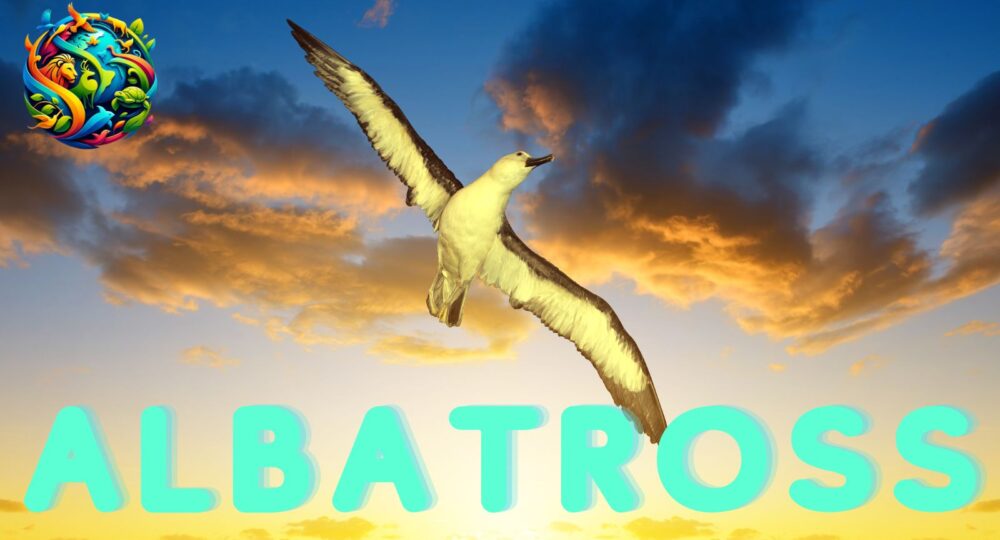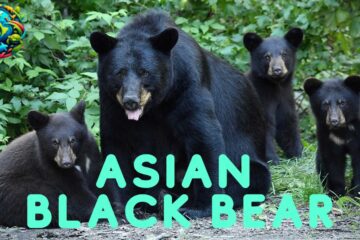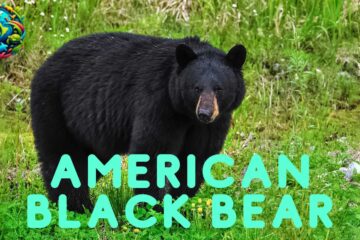Albatross: Soaring Masters of the Open Ocean
Introduction
The albatross is a remarkable and awe-inspiring bird, known for its exceptional flying abilities and majestic presence. Belonging to the family Diomedeidae, albatrosses are among the largest flying birds, with wingspans that can exceed 11 feet. These oceanic wanderers are found primarily in the Southern Hemisphere, where they spend most of their lives gliding effortlessly over the open seas. This article delves into their captivating world, exploring their habitats, physical characteristics, behaviors, and much more.
Amazing Facts
They are extraordinary creatures with numerous fascinating attributes:
- Wingspan: The wandering albatross has the longest wingspan of any bird, reaching up to 11 feet (3.4 meters), allowing it to glide vast distances without flapping its wings.
- Flight Efficiency: They are masters of dynamic soaring, using wind currents and air pressure differences to travel thousands of miles with minimal energy expenditure.
- Longevity: They are among the longest-living birds, with some individuals living over 60 years.
- Breeding: They have a slow reproductive rate, often breeding only once every two years and forming lifelong monogamous pairs.
- Navigation: They have remarkable navigation abilities, using a combination of the sun, stars, and the Earth’s magnetic field to find their way across vast ocean expanses.
- Conservation Status: Several species of albatross are endangered or vulnerable due to threats like longline fishing, plastic pollution, and habitat destruction.
Habitat and Food
They are highly adapted to life at sea, spending most of their lives far from land. Their diet reflects their pelagic lifestyle.
Habitat:
- They inhabit the open oceans, particularly in the Southern Hemisphere, including the Southern Ocean, South Pacific, and South Atlantic.
- They are also found in the North Pacific, with species like the Laysan and black-footed albatrosses frequenting these waters.
- Albatrosses breed on remote islands and coastal cliffs, where they return annually to nest and raise their young.
Food:
- Albatrosses are carnivorous, feeding primarily on squid, fish, and krill.
- They are known to follow ships to scavenge for offal and other discards.
- Albatrosses use their keen sense of smell to locate prey over vast distances, an ability rare among birds.
Appearance
Albatrosses are known for their striking appearance, which is both functional and beautiful. Key characteristics include:
- Size: They are large birds, with body lengths ranging from 2.3 to 4.5 feet (70 to 140 cm) and wingspans reaching up to 11 feet (3.4 meters).
- Color: Their plumage is typically white with varying patterns of black, gray, or brown on their wings and back. Some species have unique color patterns and markings.
- Beak: Long, hooked beaks adapted for catching slippery prey, with tubular nostrils that help expel salt.
- Wings: Long, narrow wings designed for efficient gliding and dynamic soaring over the ocean.
- Feet: Webbed feet adapted for swimming and taking off from the water.
Types/Subspecies of Albatrosses
Albatrosses are divided into several species, each with unique traits and adaptations to their specific environments:
- Wandering Albatross (Diomedea exulans): Known for its incredible wingspan and long migrations across the Southern Ocean.
- Black-browed Albatross (Thalassarche melanophris): Recognizable by the distinctive black stripe above its eyes, found in the South Atlantic and Southern Oceans.
- Laysan Albatross (Phoebastria immutabilis): Found primarily in the North Pacific, known for its graceful flight and striking plumage.
- Royal Albatross (Diomedea epomophora): One of the largest albatross species, breeding on islands around New Zealand.
- Grey-headed Albatross (Thalassarche chrysostoma): Identified by its gray head and bright yellow beak, found in sub-Antarctic regions.
- Sooty Albatross (Phoebetria fusca): Characterized by its dark plumage, found in the Southern Ocean.
Predators and Threats
While they are formidable fliers, they face significant natural and human-induced threats that impact their survival.
Natural Predators:
- Birds of Prey: Eggs and chicks are vulnerable to predation by skuas, gulls, and other large seabirds.
- Invasive Species: On breeding islands, introduced species like rats and Cats can prey on eggs, chicks, and even adult albatrosses.
Threats:
- Longline Fishing: They are often accidentally caught on hooks used in longline fishing, leading to significant mortality rates.
- Plastic Pollution: Ingesting plastic debris, which can lead to malnutrition and death.
- Habitat Destruction: Coastal development and human activities on breeding islands disrupt nesting sites.
- Climate Change: Alters ocean currents and prey availability, affecting albatross feeding and breeding success.
Mating
Albatrosses exhibit unique and complex mating behaviors, essential for the continuation of their species.
- Breeding Season: Typically occurs in the spring and summer, depending on the species and location.
- Courtship Displays: Involve elaborate dances, vocalizations, and mutual preening to establish and strengthen pair bonds.
- Nesting: Albatrosses return to the same breeding sites and often the same nests each year, constructing nests from grass, soil, and other materials.
- Egg Laying: Females lay a single egg, which is incubated by both parents for about 70-80 days.
- Parental Care: Both parents take turns feeding and protecting the chick, which fledges after 5-10 months, depending on the species.
How They Communicate
They use a variety of methods to communicate with each other, particularly during mating and social interactions.
Vocalizations:
- Calls: They produce a range of calls, including whistles, grunts, and moans, to communicate with mates and other individuals.
- Courtship Songs: Complex vocalizations are part of their courtship rituals, helping to strengthen pair bonds.
Body Language:
- Displays: Elaborate courtship dances involve synchronized movements, bill clacking, and wing spreading.
- Posturing: Body postures convey aggression, submission, or readiness to mate.
Chemical Signals:
- Scent Marking: While less common in birds, some species use scent to identify and bond with their mates.
Religious and Cultural Significance
They hold significant symbolic and cultural importance in various societies:
Maritime Traditions:
- Symbol of Good Luck: Sailors traditionally viewed them as omens of good luck and favorable winds. Harming an albatross was considered bad luck.
- The Rime of the Ancient Mariner: Samuel Taylor Coleridge’s poem features them as a symbol of nature and the consequences of human actions against it.
Indigenous Cultures:
- Spiritual Symbol: In some indigenous cultures, they are revered as spiritual symbols of endurance, freedom, and navigation.
Modern Symbolism:
- Conservation Icon: They have become symbols of marine conservation and the fight against pollution and climate change, highlighting the need to protect our oceans.
Movies Featuring Albatrosses
They have been featured in various films and documentaries, showcasing their incredible abilities and the challenges they face:
- “Winged Migration” (2001): A documentary that follows the migratory patterns of various birds, including albatrosses, offering stunning visuals of their journeys.
- “The Blue Planet” (2001): A BBC documentary series narrated by David Attenborough, featuring albatrosses and their life at sea.
- “March of the Penguins” (2005): While primarily about emperor penguins, this documentary includes footage of albatrosses in their natural habitat.
- “Albatross” (2017): A documentary by Chris Jordan, highlighting the impact of plastic pollution on albatrosses in the Pacific Ocean.
Pronunciation of “Albatross” in Different Languages
It is pronounced differently across various languages, reflecting linguistic diversity:
- English: /ˈælbətrɒs/
- Spanish: /albatros/
- French: /albatros/
- German: /Albatros/
- Italian: /albatros/
- Mandarin Chinese: /信天翁 (xìn tiān wēng)/
- Japanese: /アホウドリ (ahōdori)/
- Russian: /альбатрос (al’batros)/
- Arabic: /القطرس (al-qaṭrus)/
- Hindi: /एल्बाट्रॉस (elbāṭros)/
FAQs
Q: Why do albatrosses have such large wingspans? A: They have large wingspans to allow them to glide effortlessly over the ocean for long distances, conserving energy and using wind currents for dynamic soaring.
Q: Where do they live? A: They inhabit the open oceans, particularly in the Southern Hemisphere, and breed on remote islands and coastal cliffs.
Q: What do they eat? A: They primarily feed on squid, fish, and krill, using their keen sense of smell to locate prey over vast distances.
Q: How do they communicate? A: They communicate through vocalizations, body language, and scent marking, especially during mating and social interactions.
Q: Are they endangered? A: Several species are endangered or vulnerable due to threats like longline fishing, plastic pollution, and habitat destruction. Conservation efforts are crucial to protect their populations.
The majestic albatross symbolizes the beauty and resilience of the open ocean, playing a vital role in marine ecosystems and human culture. This exploration highlights their unique traits and behaviors, celebrating the grandeur and complexity of these remarkable seabirds
This Article is Sponsored by FINCTOP & TECHETOP







